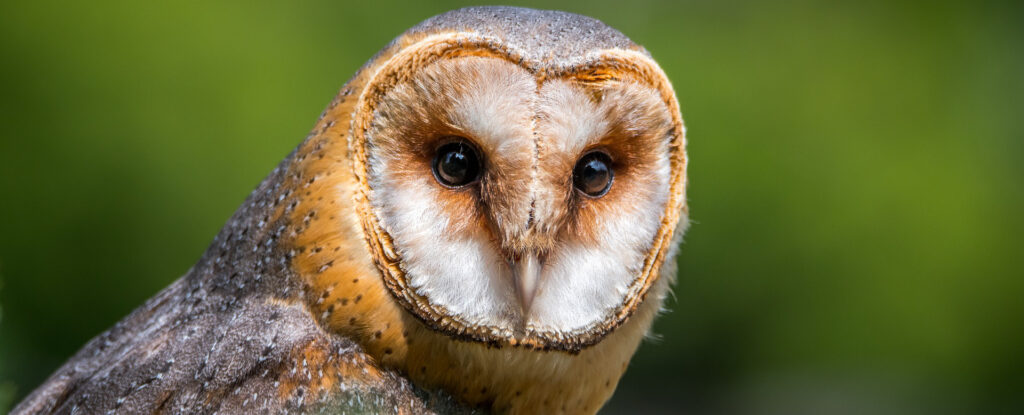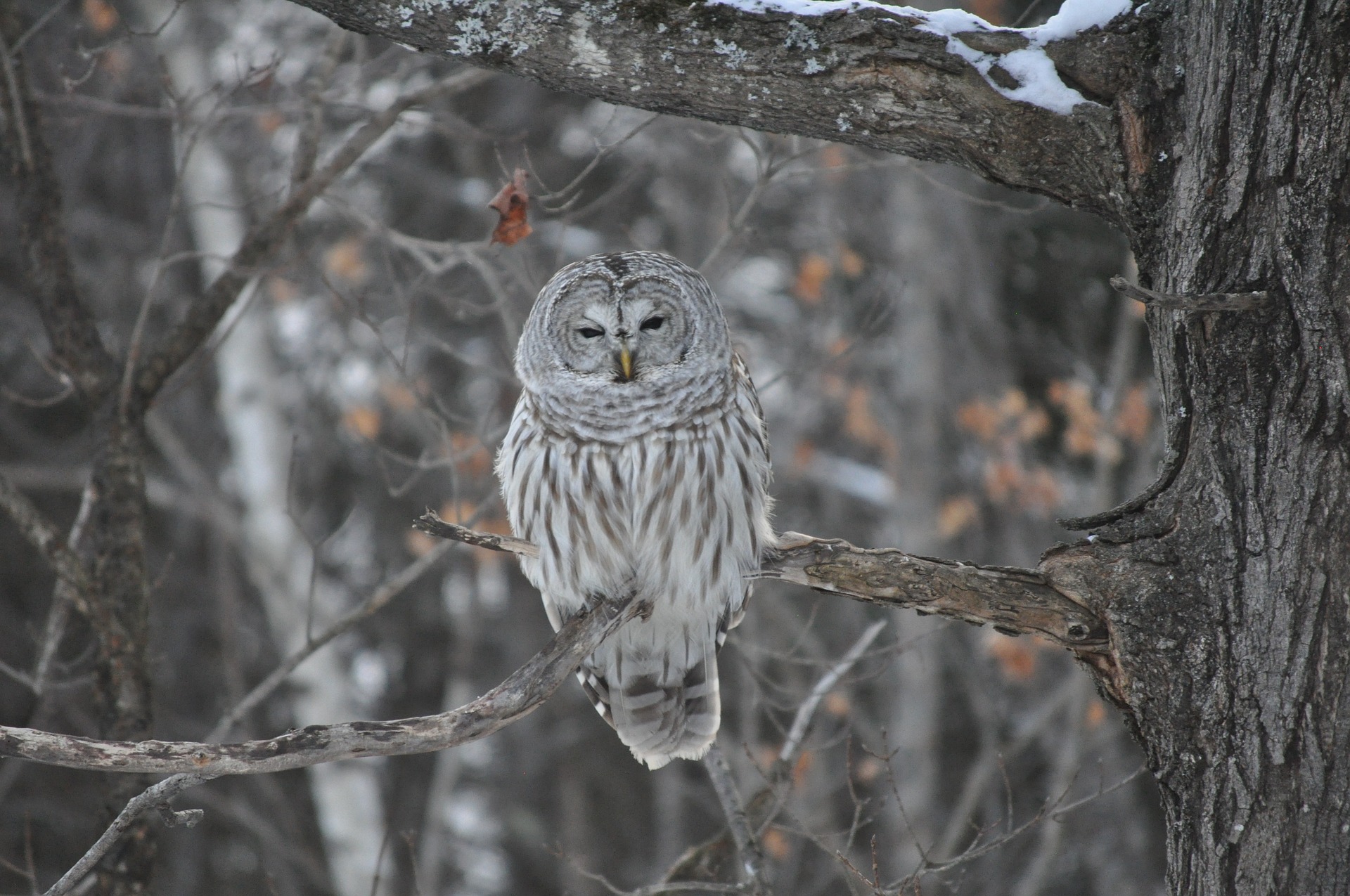
Probably very few animals over the millennia have impressed and stimulated the collective imagination as much as the nocturnal birds of prey. Creatures at ease only after sunset, able to fly and hunt in total darkness, have aroused, depending on the cultures and the period, wonder and admiration or superstitious awe.
Belonging to the order of the Strigiforms, which includes about 200 species all over the world, these birds are large predators and feed on a rich variety of animals. The smaller species, such as owls and owls, prefer insects and other invertebrates, while larger owls can also prey on medium-sized animals, and sometimes grab and kill even the foxes. However, a substantial part of their diet is almost always represented by small mammals, especially rodents.

All members of this group share some unique characteristics, the result of an extreme adaptation to nocturnal habits of life. First of all, they have large frontal eyes that are highly sensitive to light. The eyeball, with its particular tubular shape, allows them an exceptional visual acuity and an accurate distance calculation.
Their other sense extraordinarily developed, even more than sight, is the hearing, with which they are able to perceive even the most faint sounds to locate easily and with great precision the origin of the sounds emitted at night from their tiny prey.
Their head is characterized by a facial disk formed by short, curved feathers that, like a parable (not unlike a man who cupped his hands behind his ear), concentrate and convey even the sounds weaker towards the auditory ducts that are asymmetrical: the sound reaches you in slightly different times and allows the raptor a more exact location of its origin.
Thanks to all these characteristics, nocturnal birds of prey can move and hunt in total darkness, even relying completely on hearing. The hunt is facilitated by a silent flight, made possible by soft feathers and with jagged edges, able to cushion the noises produced by the beating of the wings.

Their nocturnal calls, well audible in the dark from a great distance, have sometimes contributed to reinforce their bad reputation, but still represent another important characteristic of theirs: from the powerful and monosyllable “kiùuu” of the axle, often audible even in urban environments , to the “mew” of the owl; from the unmistakable “ùù-uh” of the owl, which resounds up to more than 4 km, to the disturbing breath of the barn owl; these verses are mainly intended to mark the territory and are often performed in duets by the territorial couple. The Long-eared Owl (Asio otus, L.) has a pair of prominent ear tufts. It can be very difficult to spot in the branches of the trees, due to its extremely mimetic plumage.
Many species have on their heads a pair of prominent “horns” auricular, not real ears but tufts of feathers that can be raised in alarm situations or to break the contour of the shape and better camouflage, perhaps while resting on the branches or against the trunk of some trees.

Not everyone withdraws into their hiding places with the arrival of daylight: for example, the Little Owl (Athene noctua) is perhaps for many the most familiar and recognizable among the Strigiforms precisely because, possessing partially diurnal habits, it is not difficult to observe the profile of its rounded shape peep out even in the middle of the day from the top of old buildings, rocks and walls.
Some other species are migratory, such as the Eurasian Scops-Owl (Otus scops, L.), which despite its miniscule size (just 20 cm in length), often spends the winter period in the savannahs of sub-Saharan Africa, and then returns again in Europe in spring.
Like many other birds, they have the habit of keeping in their stomach the parts of indigestible food (hairs, feathers, bones) and regurgitating them in the form of compact boluses called “wads”: these represent a particularly valuable source of scientific information and they allow, for example, censuses of micromammals (moles, shrews, dormice and other rodents) present in the area, creatures otherwise difficult to censor due to their elusive nature.
Also because of their habit of frequenting cemeteries, where they can easily find an abundance of prey and a disturbing environment, these silent but active animals have often been the object of popular beliefs, associated with death presages and demonic presences, and based on this persecuted, paradoxically, above all by the inhabitants of rural environments, despite the benefits evidently brought to them. The careful naturalistic observation has instead allowed to make known the life and habits of these species, bringing them back to a more earthly dimension and proving once again that even the most mysterious and fleeting lifestyles are dictated by special needs and specializations that make unique every living species.


